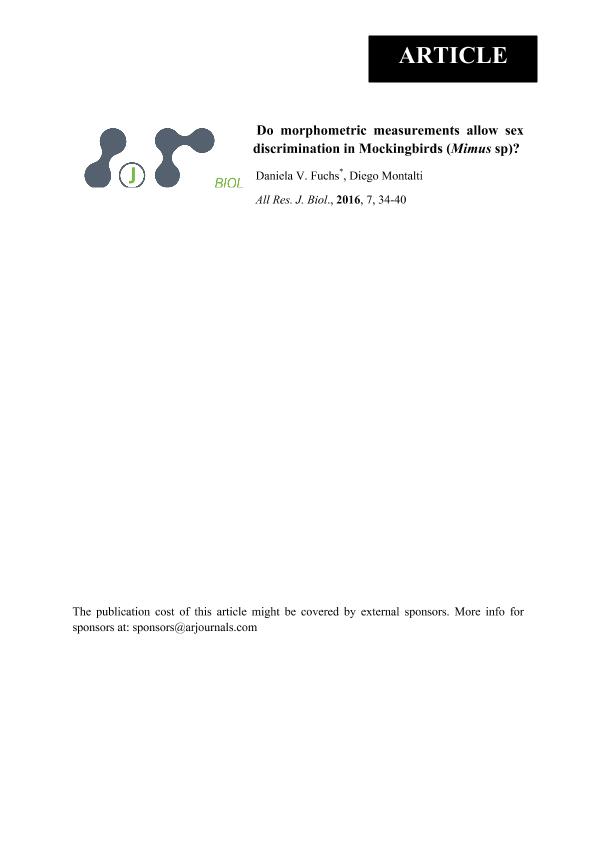Artículo
Do morphometric measurements allow sex discrimination in Mockingbirds (Mimus sp)?
Fecha de publicación:
10/2016
Editorial:
Society for the Improvement of Science
Revista:
The All Results Journals: Biol
ISSN:
2172-4784
Idioma:
Inglés
Tipo de recurso:
Artículo publicado
Clasificación temática:
Resumen
Sexual dimorphism in birds may be expressed as differences in body size, plumage, color and/or behavior. Many species are monomorphic in color, making sex determination difficult in the field. An example of the latter are mockingbirds, which are passerines of the genus Mimus, endemic to the Americas. In order to distinguish between male and female mockingbirds using external body measurements that are easy to take, the objective of this work was to quantify morphometric differences between sexes in adults of the following species: M. thenca (45 specimens), M. patagonicus (95), M. saturninus (88), M. triurus (152), and M. dorsalis (7). We measured the following variables: culmen length, bill height and width, tarsus length, middle toe length, wing chord and tail length. Measurements were generally larger in males than in females except for bill width in M. saturninus and M. triurus, culmen length in M. thenca and M. dorsalis, and bill height in M. dorsalis. There were significant differences between sexes in wing chord for M. patagonicus, M. saturninus and M. triurus; tail length for M. patagonicus and M. triurus; tarsus length for M. patagonicus; and in middle toe length for M. triurus. No significant differences in measurements were found between sexes for M. thenca. Significant discriminant functions were obtained for M. patagonicus, M. saturninus and M. triurus, with a percentage of correct classification less than 80%. Only a few variables were useful for sex determination in the studied Mimus species, i.e. wing chord, tail length, middle toe length and tarsus length for three, two, one and one species, respectively.
Palabras clave:
Mimidae
,
Mockingbirds
,
Morphometrics
,
Dimorphism
,
Southern South America
Archivos asociados
Licencia
Identificadores
Colecciones
Articulos(CCT - LA PLATA)
Articulos de CTRO.CIENTIFICO TECNOL.CONICET - LA PLATA
Articulos de CTRO.CIENTIFICO TECNOL.CONICET - LA PLATA
Citación
Fuchs, Daniela Viviana; Montalti, Diego; Do morphometric measurements allow sex discrimination in Mockingbirds (Mimus sp)?; Society for the Improvement of Science; The All Results Journals: Biol; 7; 3; 10-2016; 34-40
Compartir




